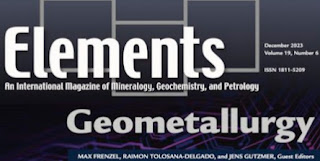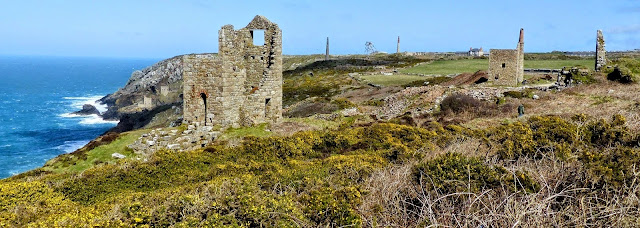I recently caught up with an old Cornish miner who I had not seen for around 45 years. Terry Angove had been involved with shaft sinking at the old tin mines of the 1970s, South Crofty, Wheal Jane and Mount Wellington, but I knew him not as a miner but as a very competent diver and we talked a lot of our dives in the 1970s, particularly a deep dive in Falmouth Bay on the wreck of the HMT Rinovia.
The HMT Rinovia was a steam fishing vessel, requisitioned as a mine sweeper in 1939. In 1940, it hit a mine and sank and although its approximate location was known, about 2 miles off Falmouth, there was no search by local divers, probably due to the depth of water, about 180 ft (55m), considered to be too deep for diving breathing compressed air.
In October 1977 a local fisherman spotted the wreck on his echo sounder and identified transit bearings, two fixed and visible objects lining up on the Falmouth shoreline. He reported the wreck location to the Falmouth Branch of the British Sub-Aqua Club (BSAC). At the time I was Diving Officer for the Falmouth and Camborne School of Mines branches of BSAC and as such was responsible for dive planning and safety. The opportunity to dive on a 'virgin' wreck was too good to miss, but it would have to be undertaken by the most experienced deep divers in the clubs, as anything over 100 feet (30m) was regarded as deep and 132 feet (40m) was recommended as the limit for compressed air diving. It was always a source of amusement that non-divers referred to our air bottles as 'oxygen tanks'. Compressed air was used not because it was cheap, but because pure oxygen could be lethal when breathed at only around 2 atmospheres pressure, a depth of only 10m, many wartime divers dying due to oxygen poisoning.
It was decided that a four man team would dive on the Rinovia, Terry and me, Mike Tuffery, a local tug captain and Ken Dunstan, a local fisherman and owner of the 24 ft Pisces, Falmouth Branch's regular diving boat. All of us had many +100 ft dives under our belts, the most recent and deepest being 160 ft (49 m) off the Wolf Rock Reef between Land's End and the Isles of Scilly.
 |
| Pisces |
Diving to such depths is not just a matter of strapping on an aqualung and plunging below the surface, it requires careful planning and a knowledge of the physics and physiological effects of diving. In planning the dive there were a few things to take into account:
Air Supply: On the surface the average human breathes about 1 cubic feet (0.03 m3) of air per minute. I would be using two (twin) bottles, containing 110 ft3 of air compressed to 160 atmospheres (ats) pressure. The bottles were connected to a regulator on the mouthpiece which supplied air on demand at the pressure of the surrounding water. Every 33 ft (10 m) of depth increased the surrounding pressure by 1 atmosphere so at 10m a diver would be breathing air at 2 ft3 per minute and at 180 ft the pressure would be 6.5 ats, so we would be consuming 6.5 ft3 per minute, imposing a severe limit to the time we could spend at depth.
Also taken into account was that air at a pressure of 6.5 ats is very dense and there would be an increase in exertion just by breathing it in. This would also be exacerbated by the effect of cold water at depth and the effect of pressure on our neoprene wetsuits. Neoprene is a synthetic material which is full of minute 'closed cells' of nitrogen which provide insulation. It provides buoyancy such that the diver requires a weighted belt (7 kg in my case) to achieve neutral buoyancy at the surface. However as the diver descends, the pressure squeezes the nitrogen in the cells, the wetsuit becomes thinner and loses its insulation properties, and also its buoyancy, so to maintain neutral buoyancy it is necessary to bleed air from the bottles into the adjustable buoyancy lifejacket (ABLJ), an essential part of the equipment. On returning to the surface this added air must be bled out of the ABLJ to avoid an uncontrolled ascent.
So we could plan the dive, and its duration according to our air supply, but the main concern with deep diving with air is the effect of nitrogen on the body.
Nitrogen: Air contains 78% nitrogen, an inert gas which causes no problems when breathed at normal atmospheric pressure, but is a major worry when breathed at high pressure. At depth nitrogen is absorbed in the bloodstream and if the ascent is made too quickly this can be released as bubbles in the bloodstream, which can be fatal. So all divers are trained to make a slow ascent to the surface to avoid this and it isn't of major concern to an experienced diver.
However at great depth nitrogen is also forced into tissues and ligaments and a slow ascent to the surface may not give sufficient time for this to be released. The gas can bubble out into the joints causing crippling pain- decompression sickness, commonly know as 'the bends'.
Decompression sickness was originally known as Caisson Disease and was first identified in mining in the mid 19th century after the invention of the steam engine, which was eventually adapted to run air compressors. The first use of a pressurised chamber was to mine coal in the Loire Valley of France in 1840, in what was called a caisson (“box” in French). A chamber with an open bottom was lowered down into the ground, and compressed air was pumped into it, forcing water down and out of the bottom. This allowed workers to dig below the water table and into valuable stores of coal. Miners worked 7 to 10 hour shifts and cases of the curious “mal de caisson,” were soon seen, described as joint pain and soreness that appeared approximately half an hour after returning to the surface.; These were the first known injuries from compressed air and represented the start of a decades-long journey to find the cause of the mysterious and deadly “caisson disease.”
Although decompression sickness is a serious condition it is totally avoidable by making stops of several minutes en route to the surface. These decompression stops are undertaken at relatively shallow depths where the relative pressure changes are at their greatest, and in our planning we decided on 5 minute stops at 30 ft and 15 feet to allow the nitrogen to dissipate after a maximum of 10 minutes at the greatest depth.
 |
Testing out a prototype decompression meter (on my right wrist) in 1976.
For the Rinovia dive we made use of trusted decompression tables |
So, we could avoid decompression sickness but the other effect of nitrogen we could not control, and it was the narcotic effect of nitrogen at high pressure which was our major concern. Nitrogen narcosis manifests itself around 100 ft (30m) and rapidly worsens with increasing depth, such that 132 ft (40m) was recommended as the safe limit for sports divers. The legendary pioneer Jacques Cousteau called it the 'rapture of the deep' and it has also been known as "Martini's law", the idea that narcosis results in the feeling of one martini for every 10 m (33 ft) below 20 m (66 ft) depth.
Although in retrospect we could have assessed our susceptibility to nitrogen narcosis by downing martinis in the pub, we did this by carrying out progressively deeper dives and by a session in the recompression chamber at Fort Bovisands in Plymouth. A recompression chamber is a cylindrical steel vessel into which air is introduced under pressure (as with the caisson) and is used to force nitrogen bubbles back into the tissues of any diver suffering from the bends, after which the pressure is slowly reduced to allow the nitrogen to diffuse safely. We were subjected to a pressure equivalent to a depth of 165 ft (50m) with no serious effects apart from a slight slowing down in the performance of simple mental tasks, but one of the CSM students succumbed to uncontrollable fits of giggling even at 95 ft (30m) so needless to say he was not asked to audition for the Rinovia dive.
And so, after all the planning we were all set for the dive.
On the morning of October 22nd 1977 Terry, Mike, Ken and I met at Mylor Harbour, Falmouth, and set off in Pisces into Falmouth Bay. We soon picked up the fisherman's transit bearings and after about 2 miles the wreck showed clearly on the echo sounder in 180 ft (55m) of water. We dropped a 'shot line' a weighted rope, onto the wreck and prepared to dive.
Terry and Mike dived first and as they descended we watched their twin sets of bubbles bursting on the surface, becoming more voluminous the deeper they went as the volume of air in each bubble increased on ascent due to the fall in pressure.
After around 20 minutes we could see them clearly holding the shot line at 15 ft (4.5m) on their second 5 minute decompression stop, after which they appeared on the surface, Terry holding aloft a hurricane lamp which he had found in full view on the wheelhouse, a clear indication that no one had dived the wreck previously.
 |
| Terry with the hurricane lamp back at Mylor Harbour |
Ken and I then dived and reached 175 ft (53m) before we arrived on the wreck but unfortunately the shot line had moved and we were somewhere on the deck with nothing recognisable. We circled the shot line but there was nothing to see of interest so after 11 minutes we terminated the dive and returned to the surface and our two stops, then the long journey back to Mylor.
 |
| At Mylor after the dive, Terry, Mike, Ken and me |
We agreed that it had been a rather disappointing venture and it remained my deepest dive until I abandoned diving in 1979 to devote my spare time to cricket! In later years I had a few reef dives in Thailand, Madagascar and the Great Barrier Reef, but diving off the Cornish coast still holds the fondest memories (see posting of 8 March 2012).
Nowadays the Rinovia is listed in Falmouth's Dive Site list and Atlantic Scuba describes it as a really nice shallow trimix dive. Shallow! How times have changed. Nowadays advanced sports divers can descend to greater depths by using gas mixtures such as trimix, a blend of oxygen and helium and a reduced amount of nitrogen, which allows safe diving to 210ft (65m) with little worries about narcosis, although decompression stops are still needed. Helium has no narcotic effect and its low density reduces breathing resistance at depth.
Deep sports diving is obviously much different now than in the 1970s. I know that many people that I meet around the world are keen divers so I would very much like to hear of your own deep diving experiences.





















.png)











































-EDIT.jpg)




